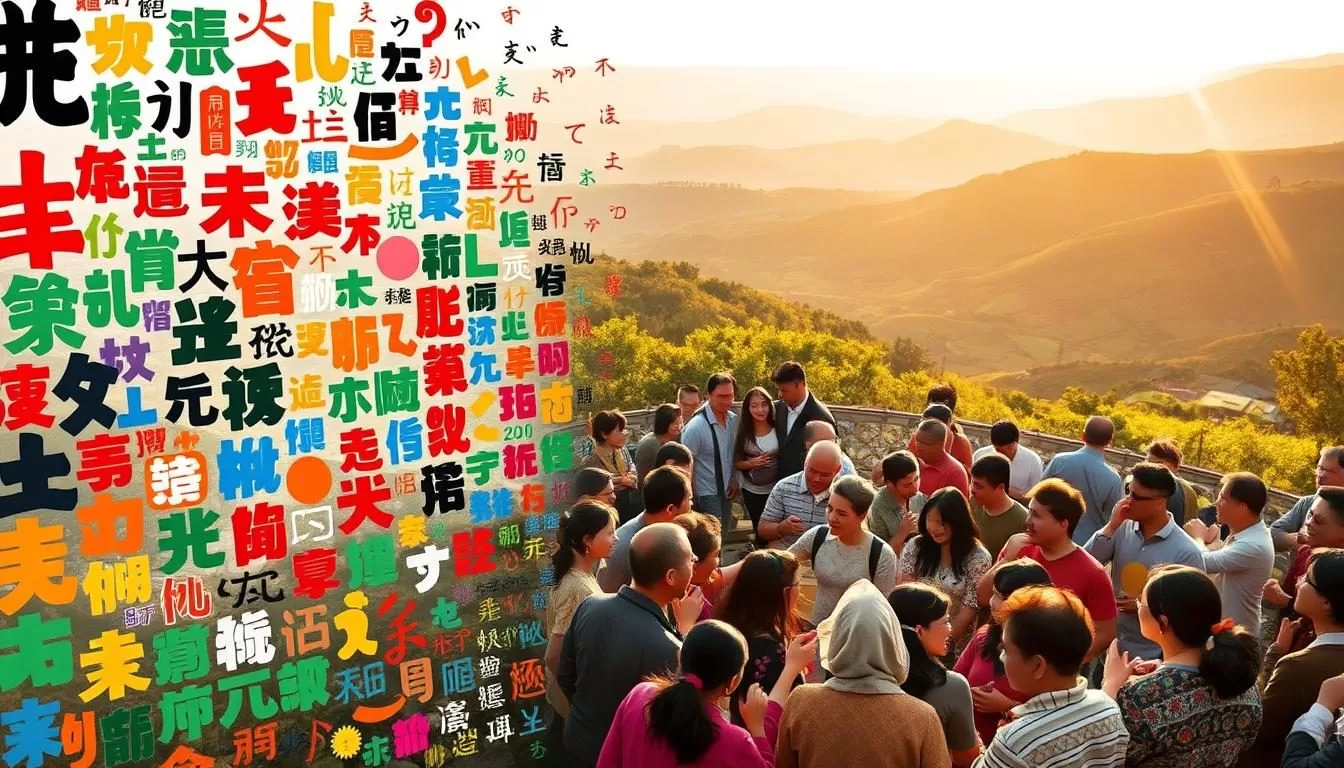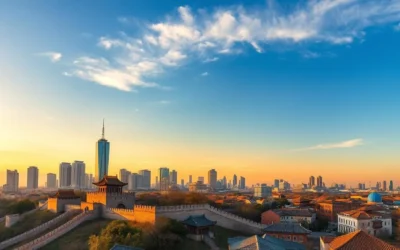✓ Accommodations✓ Flights✓ Rental Cars
Language plays a vital role in shaping the identity of a place. In this region, the dialect known as Sichuanese Mandarin stands out for its unique phonetic and vocabulary features. It serves as a common language for millions, connecting people across diverse communities.
With a population of over 80 million, this area thrives on its linguistic variety. The local dialect is not just a means of communication but also a reflection of its rich cultural heritage. Every person here contributes to preserving this linguistic legacy.
Understanding the role of language in this region offers insight into its history and daily life. Whether you’re a visitor or a language enthusiast, exploring this linguistic diversity is a rewarding experience.
Exploring Sichuan’s Rich Linguistic Heritage
The linguistic tapestry of this region tells a story of cultural fusion and historical depth. Every word spoken here carries the weight of centuries of tradition and migration. Understanding this heritage gives you a glimpse into the soul of the area.
Cultural Significance
Language here is more than just a tool for communication. It’s a vital part of daily life, shaping how people connect and express their identity. From local markets to traditional festivals, the way people speak reflects their shared history and values.
For example, unique vocabulary and expressions often emerge from cultural exchanges. These words become a bridge between generations, preserving traditions while adapting to modern life.
Historical Roots and Migration
The roots of this linguistic heritage trace back to ancient times. Influences from Ba-Shu Chinese and migration patterns from regions like Hubei and Guangdong have shaped the way people speak today.
Here’s how migration played a role:
- Incoming speakers brought new dialects and vocabulary.
- Over time, these elements blended with local speech, creating a unique linguistic identity.
- This mix is still evident in the way people communicate across different parts of the region.
Understanding these historical influences helps you appreciate the richness of the local language. It’s a living testament to the area’s dynamic past and vibrant present.
Sichuan Province, China: Official and widely spoken languages
The way people speak in this region reflects centuries of history and cultural exchange. The core dialect, known as Sichuanese Mandarin, is widely used and serves as a unifying force for millions. This variety of language is not just a means of communication but also a bridge connecting the past and present.
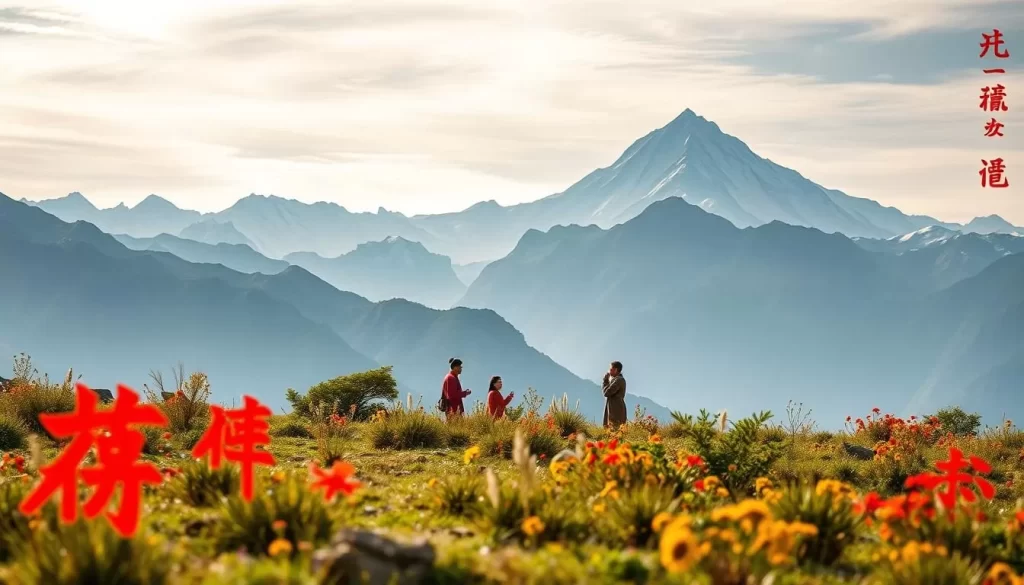
Over time, the number of speakers has grown significantly, reflecting the region’s dynamic population. Urban centers like Chengdu play a key role in shaping this linguistic landscape. The dialect here is a blend of ancient influences and modern adaptations, making it unique compared to other forms of Chinese.
Here’s a quick look at how language has evolved in this area:
| Feature | Description |
|---|---|
| Core Dialect | Sichuanese Mandarin, widely spoken in Chengdu |
| Historical Roots | Influences from Ba-Shu Chinese and migration patterns |
| Modern Usage | Adapted vocabulary and expressions in urban areas |
“Language is the roadmap of a culture. It tells you where its people came from and where they are going.”
The city of Chengdu stands out as a hub for linguistic innovation. Its dialect serves as a model for other regions, showcasing how language can evolve while preserving its roots. This blend of old and new makes the local speech a fascinating subject for study.
Understanding this linguistic variety gives you a deeper appreciation of the region’s identity. Whether you’re exploring its streets or engaging with locals, the language here offers a window into its soul.
The Evolution of Sichuanese Dialects
The evolution of dialects in this region highlights its dynamic cultural history. Over time, these dialects have adapted to modern influences while preserving their unique characteristics. Understanding these changes offers insight into the area’s rich linguistic diversity.
Chengdu-Chongqing Dialect
The Chengdu-Chongqing dialect, often called “New Sichuanese,” reflects modern linguistic trends. It merges the checked tone into the light level tone, making it distinct from older variants. This dialect is widely used in urban centers, showcasing how language evolves with cultural shifts.
Minjiang and Renshou-Fushun Variants
In contrast, the Minjiang and Renshou-Fushun variants preserve older features of Ba-Shu Chinese. These dialects maintain the checked tone, offering a glimpse into the region’s historical roots. Their vocabulary and pronunciation differ significantly from the Chengdu-Chongqing dialect, highlighting the area’s linguistic diversity.
Ya’an-Shimian Characteristics
The Ya’an-Shimian dialect merges the checked tone into the dark level tone, creating a unique phonetic profile. This variant, along with Minjiang and Renshou-Fushun, is often referred to as “Old Sichuanese.” It serves as a living link to the region’s past.
Here’s a comparison of these dialects:
| Dialect | Key Feature |
|---|---|
| Chengdu-Chongqing | Merges checked tone into light level tone |
| Minjiang | Preserves checked tone |
| Renshou-Fushun | Merges checked tone into departing tone |
| Ya’an-Shimian | Merges checked tone into dark level tone |
These dialects not only reflect the region’s history but also shape its culture today. By exploring their unique features, you gain a deeper appreciation for the area’s linguistic heritage.
Discovering the Phonetic Uniqueness of Sichuanese
The phonetic structure of Sichuanese offers a fascinating glimpse into its linguistic identity. Its tones, initials, and finals create a soundscape that’s distinct from other Chinese dialects. This uniqueness makes it a characteristic feature of the region’s cultural heritage.
Tonal System Differences
Sichuanese has a tonal system that differs significantly from Standard Mandarin. While Mandarin uses four primary tones and a neutral tone, Sichuanese features more fluid and numerous tones. This tonal variety adds a unique rhythm to the dialect, making it instantly recognizable.
For example, the checked tone in Sichuanese often merges into other tones, creating a distinct intonation pattern. This characteristic is especially prominent in urban centers like Chengdu.
Distinctive Initials and Finals
The initials and finals in Sichuanese also set it apart. Retroflex consonants, for instance, are a key phonetic trait. These sounds give the dialect its signature ‘r’ sound at the end of certain words.
Over the years, these phonetic features have evolved, influenced by historical migrations and cultural exchanges. For example, settlers from Hubei and Hunan brought new sounds that blended with local speech.
Here’s a quick look at how these phonetic features vary across the region:
- Area 1: Merges checked tone into light level tone.
- Area 2: Preserves checked tone for historical accuracy.
- Area 3: Features retroflex finals for a distinct pronunciation.
Understanding these phonetic nuances helps you appreciate the depth of Sichuanese. It’s not just a dialect; it’s a living testament to the region’s rich linguistic history.
Historical Context of Language Development in Sichuan
The roots of language in this area stretch back to ancient times, revealing a rich cultural journey. The way people speak today is deeply tied to the legacy of Ba-Shu Chinese, an ancient form of speech that laid the foundation for modern dialects.
Ba-Shu Chinese influenced not only vocabulary but also the tonal system that defines the region’s unique linguistic identity. Over centuries, this ancient language evolved, blending with other forms of speech brought by migrations during the Ming dynasty.
Legacy of Ba-Shu Chinese
The chinese language has always been a reflection of cultural history. Ba-Shu Chinese, with its distinct phonology, shaped the way people communicate in this region. Its influence is still evident in the vocabulary and tones used today.
During the Ming dynasty, migrations from other regions introduced new linguistic elements. These blended with Ba-Shu Chinese, creating a unique dialect that continues to evolve.
Here’s how historical events shaped modern speech:
- Ancient Ba-Shu Chinese provided the foundational vocabulary and tones.
- Migrations during the Ming dynasty introduced new forms of speech.
- Over time, these elements merged, creating the dialect we hear today.
This historical blend answers the question of how language development impacts communication in the region. It’s a living testament to the area’s dynamic past and vibrant present.
| Historical Influence | Impact on Modern Speech |
|---|---|
| Ba-Shu Chinese | Foundational vocabulary and tones |
| Ming Dynasty Migrations | Introduction of new linguistic elements |
| Modern Adaptations | Blended dialect with unique characteristics |
Understanding this historical context helps you appreciate the way language connects the past and present. It’s not just a form of communication but a bridge to the region’s cultural heritage.
Understanding Vocabulary Variations in Sichuanese
The vocabulary of Sichuanese reveals a fascinating blend of history and modern influences. Its rich lexicon draws from ancient Ba-Shu roots, Middle Chinese, and later borrowings from Standard Mandarin. This mix creates a unique linguistic identity that sets it apart from other dialects.
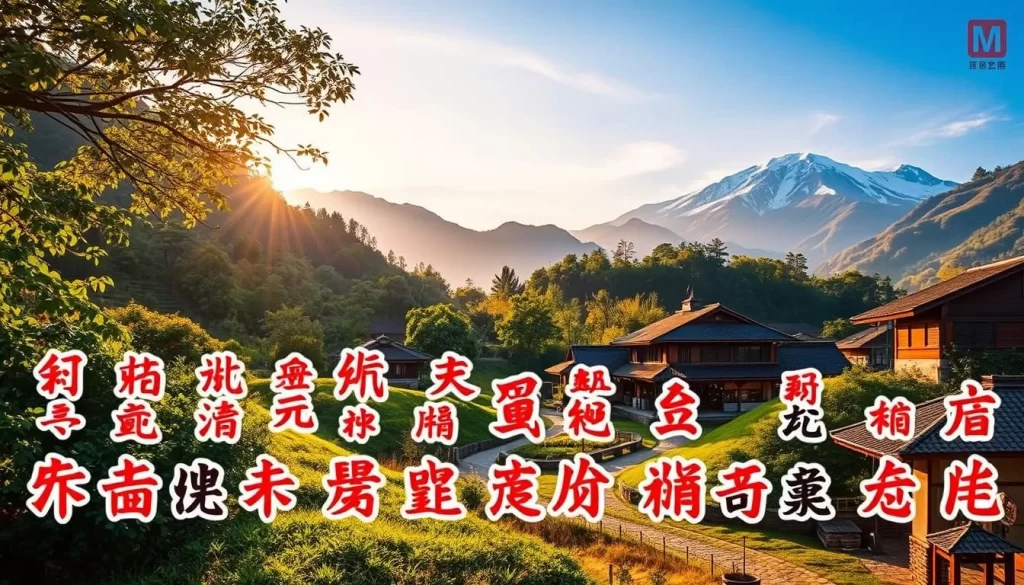
Local Lexical Diversity
Local vocabulary in Sichuanese showcases a deep connection to its cultural heritage. Words often reflect everyday life, traditions, and regional practices. For example, certain terms used in local markets or festivals are unique to this dialect.
Community groups play a significant role in preserving these lexical items. They ensure that traditional words remain in use, even as modern influences grow. This effort helps maintain the dialect’s distinctiveness.
Borrowings from Standard Mandarin
While local vocabulary is rich, Sichuanese also incorporates words from Standard Mandarin. This borrowing is especially common in formal settings, such as workplaces or official events.
Government policies promoting Mandarin have influenced this trend. Many speakers are bilingual, seamlessly switching between dialects depending on the context.
Here’s a comparison of local and borrowed vocabulary:
| Category | Local Vocabulary | Borrowed Vocabulary |
|---|---|---|
| Everyday Terms | Unique to Sichuanese | Rarely used |
| Formal Terms | Less common | Standard Mandarin |
| Cultural Terms | Deeply rooted | Occasionally borrowed |
Understanding these vocabulary variations helps you appreciate the linguistic richness of the region. It’s a testament to how history, community, and policy shape the way people speak.
Sichuan Dialects and Cultural Identity
The cultural identity of a region is often reflected in its artistic expressions. In this area, the local dialect plays a key role in shaping how people connect with their heritage. From traditional performances to modern media, language is a powerful tool for preserving and celebrating community values.
Expression in Local Arts
Local arts provide a unique platform for showcasing the influence of the dialect. Folk performances, for example, often incorporate traditional vocabulary and expressions. These elements help maintain a connection to family and cultural roots.
Artists use the dialect to tell stories that resonate with the community. This approach ensures that cultural traditions remain alive, even as modern influences grow. The use of local speech in art also fosters a sense of pride and identity among residents.
Sichuan Opera and Traditional Media
Sichuan opera is a prime example of how language and art intersect. Performers use the dialect to convey emotions and narratives, creating a deeply immersive experience. This traditional art form has been a cornerstone of cultural expression for centuries.
In traditional media, the dialect continues to play a vital role. Radio programs, for example, often feature local speech to connect with audiences. This approach not only preserves the dialect but also reinforces its relevance in daily life.
Here’s a comparison of how traditional and modern media use the dialect:
| Medium | Traditional Use | Modern Use |
|---|---|---|
| Sichuan Opera | Full performances in dialect | Blended with modern themes |
| Radio | Local news and stories | Incorporates popular music |
| Television | Limited use | Increased presence in dramas |
Preserving these linguistic elements is vital for sustaining cultural identity. By exploring the influence of the dialect on local arts, you gain a deeper appreciation for the region’s rich heritage. For more insights, check out this detailed analysis of Sichuanese dialects.
Impact of Government Policy on Language Use
Government policies have reshaped the way people communicate, influencing both daily life and cultural identity. Over the years, efforts to standardize language use have led to significant changes in how local dialects are preserved and practiced.
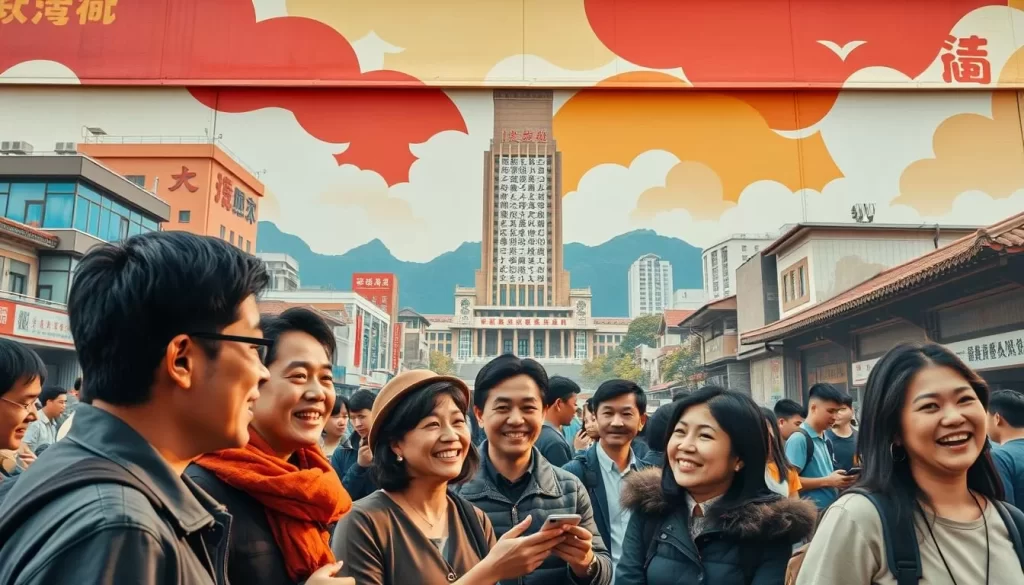
Mandarin as the National Language
Mandarin has been promoted as the national language, especially in education and public media. Policies like the Compulsory Education Law of 1984 mandate its use in schools, ensuring it becomes the primary medium of instruction.
This shift has led to a decline in the use of local dialects. For example, in urban areas, Mandarin is now the dominant language in classrooms and workplaces. This change reflects the government’s goal of unifying communication across the country.
Effects on Local Speech
While Mandarin is widely spoken, local dialects face challenges in maintaining their relevance. Many communities resist this shift, striving to preserve their linguistic heritage. This tension is evident in everyday conversations and cultural practices.
For instance, in some regions, bilingual education programs attempt to balance Mandarin with local dialects. However, the focus on Mandarin often overshadows these efforts, leading to a gradual decline in dialect use.
Here’s a quick look at the impact of these policies:
- Grammar structures in local dialects are increasingly influenced by Mandarin.
- Urban centers see a higher adoption of Mandarin, while rural areas retain more dialect usage.
- Cultural events and traditional media remain key platforms for preserving local speech.
Despite these challenges, many communities continue to value their dialects. They see them as a vital part of their identity and heritage. For more insights into how language policies affect minority groups, check out this detailed analysis.
Integration of Immigrant Languages and Local Speech
The blending of immigrant languages with local speech creates a unique linguistic tapestry. This fusion has enriched the way people communicate, making the region’s language one of the most diverse in the country.
Over time, migration from neighboring regions like Hubei and Hunan has introduced new elements into the local dialect. These contributions have shaped the way people speak today, blending seamlessly with existing speech patterns.
Contributions from Neighboring Regions
Neighboring regions have played a significant role in shaping the local language. For example, settlers from Hubei brought plain and straightforward vocabulary that integrated easily into everyday speech.
This integration is evident in the way Standard Mandarin has influenced local dialects. While Mandarin is the official language, its impact on regional speech is undeniable.
Here’s how these contributions have enriched the linguistic landscape:
- Vocabulary: New words and phrases from immigrant languages have become part of daily conversations.
- Pronunciation: Regional accents have blended, creating a unique soundscape.
- Grammar: Structures from neighboring dialects have influenced local speech patterns.
The impact of these integrations is profound. They represent a dynamic fusion of regional language elements, making the local dialect one of the most vibrant in the area.
For a deeper understanding of how language contact shapes communication, explore this detailed analysis.
Everyday Communication in Sichuan
Everyday communication in this region showcases a fascinating blend of tradition and modernity. The way people speak varies greatly depending on the context, whether casual or formal. This dynamic reflects the region’s rich linguistic heritage and its adaptability to contemporary life.

Casual vs. Formal Usage
In casual settings, the tone of speech is often relaxed and expressive. People use colloquial phrases and regional vocabulary that reflect their cultural identity. This informal style is common in family gatherings, local markets, and everyday conversations.
In contrast, formal communication adopts a more structured approach. Standard Mandarin is frequently used in workplaces, schools, and official events. This shift ensures clarity and professionalism, especially in environments where precision is key.
Here’s how language usage differs between casual and formal contexts:
- Casual: Relaxed tone, regional vocabulary, and expressive phrases.
- Formal: Structured sentences, Standard Mandarin, and precise terminology.
These variations highlight the flexibility of the local dialect. It adapts seamlessly to different social settings, making it a vital part of everyday life. For a deeper dive into the linguistic diversity of the region, explore this detailed guide.
Historical trends also play a role in shaping modern speech. Over the century, the dialect has evolved, blending traditional expressions with contemporary influences. This fusion ensures that the language remains relevant while honoring its roots.
Whether you’re engaging in a casual chat or attending a formal event, understanding these nuances enriches your experience. It’s a testament to the region’s ability to balance tradition and modernity in its everyday communication.
Modern Linguistic Trends in Sichuan
Younger generations are reshaping the linguistic landscape with their unique communication styles. The rise of digital media and rapid urbanization has created a dynamic environment where language evolves rapidly. This section explores how modern trends are influencing the way people speak in this region.
Youth Language and Code-Switching
Young speakers often switch between Sichuanese Standard Mandarin and local dialects in everyday conversations. This practice, known as code-switching, reflects their ability to adapt to different social contexts. For example, they might use the local dialect at home or with friends but switch to Mandarin in formal settings like school or work.
This trend is particularly evident in urban areas, where exposure to diverse linguistic influences is more common. Younger generations are blending traditional expressions with modern vocabulary, creating a unique linguistic identity.
Digital Age Influence
The digital age has significantly impacted language use. Social media platforms and online communication tools encourage the blending of dialects and Mandarin. For instance, popular culture references and internet slang often appear in everyday speech, especially among young people.
Here’s how digital media is shaping language trends:
- Community forums and chat groups mix local dialects with Mandarin.
- Online content creators use a blend of traditional and modern expressions.
- Digital platforms serve as a space for preserving and evolving the local dialect.
“Language is the most powerful tool we have for connecting with others, and the digital age has only amplified its reach.”
These changes highlight the adaptability of the local dialect. While traditional forms remain important, modern influences are shaping the future of language in this region. For more insights into linguistic diversity, check out this detailed guide.
| Trend | Impact |
|---|---|
| Code-Switching | Blending dialects with Mandarin in different contexts |
| Digital Media | Introducing new vocabulary and expressions |
| Urbanization | Encouraging linguistic diversity in cities |
Understanding these trends helps you appreciate how language evolves in response to modern life. Whether you’re exploring the streets of Chengdu or engaging with locals online, the linguistic landscape offers a fascinating glimpse into the region’s identity.
Conclusion
Exploring the linguistic diversity of this place reveals a rich tapestry of history and culture. The local dialects, shaped by centuries of tradition, continue to play a vital role in daily life. They connect people to their heritage, even as modernization and policy changes bring new challenges.
Language is more than just a tool for communication. It’s a reflection of identity and a bridge between generations. Preserving these dialects ensures that cultural richness remains alive in a rapidly changing world.
As you navigate this dynamic landscape, remember the importance of linguistic diversity. It’s a reminder of how history and modernity coexist, shaping the way people express themselves. For more insights into the world of languages, explore this detailed guide.
In a globalized world, local dialects offer a unique connection to the past. They remind us of the value of preserving cultural identity while embracing change. This balance is what makes this place truly special.
The above is subject to change.
Check back often to TRAVEL.COM for the latest travel tips and deals.
